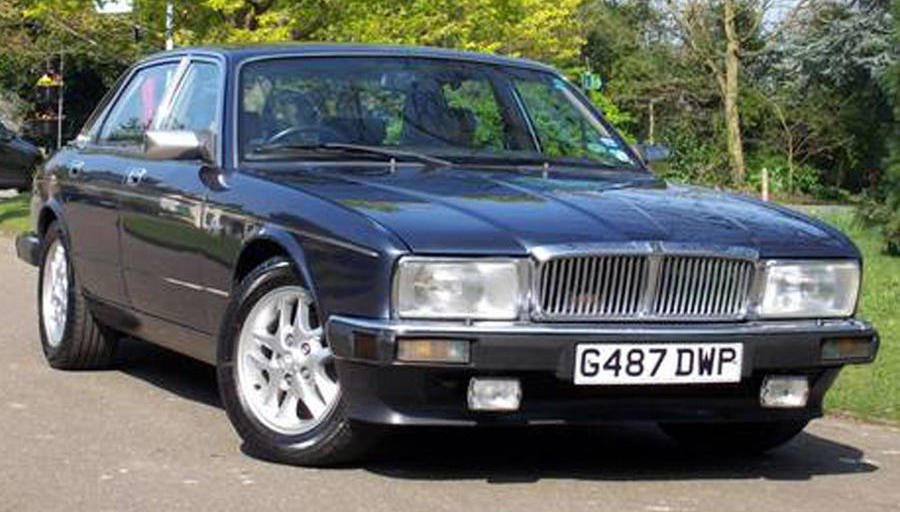We don't often quote artists at Autocar, but "have no fear of perfection – you'll never reach it", the oft-paraphrased words of Salvador Dalí, seems as good a motto as any for owners of the Jaguar XJ40, an iconic British saloon whose problematic predisposition is central to its charm.
That's not to say every XJ of this generation listed in the classifieds is a basket case: at the time of writing, you could buy a mint-condition 1989 car for £8000 or a very promising one-owner 1992 example for £10,995. But these are collectors' cars, kept in garages and driven only on sunny days. If your used Jag budget is south of the £5000 mark, you're looking at slightly less prestigious examples and would do well to exercise caution.
A big part of the XJ's appeal is its range of engines: Jaguar offered a straight six from launch in 2.9-litre (XJ6) and 3.6-litre (Sovereign) forms. These were bored out to 3.2 litres and 4.0 litres respectively later on, with the coveted XJ12 6.0-litre V12 option joining the range in 1993, just a year before XJ40 production ended.
The largest six-cylinder unit is the most common these days and well regarded for its ability to get down the road. Certainly, its outputs of 246bhp and 289lb ft hold up well even today, being able to push the saloon from 0-62mph in 9.0sec and on to a top speed of 136mph.
The later XJ12 and Daimler Double Six models have twice the amount of cylinders to fill and thus are much costlier to run, but they run at such a lazy state of tune and are often driven carefully, so they could be the unexpected safe options here.
The rarer XJR – tuned by TWR, Jaguar's then racing partner – is about as close as the XJ40 came to performance territory, packing hardcore suspension components and a tuned version of the larger straight six beneath its bodykit.
Each model rides well and is a good deal quieter and more refined than the XJ40's long-lived predecessor, the XJ Series III. Don't expect much in the way of engaging dynamics, because this isn't a car revered for its poise or agility, but it's no boat either.
Mechanicals across the range are more solid than you might expect of a 1980s British car (save for some well-known niggles with the 2.9-litre engine), so why has the XJ40 yet to achieve bona fide classic status? Its bodywork is one factor: quite apart from the fact that even some of the most ardent enthusiasts consider this to be one of Jaguar's more tepid designs, it's also prone to corrosion. Wings, arches, bootlids and, more seriously, the bulkhead are the most fragile areas, and because the XJ40 remains relatively low in value, they can still send an otherwise clean car to the scrapheap when they crumble.
So do your bit for this disappearing British icon. The suave XJ-S coupé is well on its way to unattainability and daily-driven Mark 2s have long been a thing of the past. The XJ40, on the other hand, is a real down-to-earth wafter, and you can still bag a good example if you know where to look.
How to get one in your garage
An owner's view
Sebastien Turin: "The 2.9 is a mix between Jaguar's AJ6 and V12 engines with some XK parts. It's prone to head gasket failure, and the head can be badly damaged. Because the engine is a bit weak, people use them too harshly. The 3.6 is more revvy and has a sportier feeling, but it has no oxygen sensor, so some people would consider it less reliable, because it can't compensate for something like a small air leak."
Buyer beware...
- Engine: The mammoth V12 is durable, but its MPG figures will be in the single digits around town. The straight sixes like to eat head gaskets, so check for creamy oil and white smoke from the exhaust. Timing chain tensioner failure is one to avoid – best to replace as a precaution. Many enthusiasts dismiss the smaller six-pots on the grounds of lacklustre performance and poor frugality.
- Bodywork: Structural components age well, but bodywork is susceptible to tin worm, particularly on pre-1989 cars. The bootlid is usually the first to go, but this can be replaced. Of greater concern, and usually fatal, are crumbling inner wings, bulkhead and sills. Also examine the front end, where the subframe can rust if drains haven't been drilled. If you find a solid car, coat its underside with Waxoyl and clean it regularly.
- Suspension: The XJ40's self-levelling suspension is similar to Citroën's trademark hydropneumatic system but arguably more fragile. Many owners simply remove it when the rear starts to sag and bounce. It was standard until 1990 and an option thereafter. Check the state of play and consider budgeting for conventional shock absorbers.
- Electrics: Post-1990 cars suffer from headlight bulb sensor failure, causing a warning light on the dashboard even if the bulb is working. Trip computer and gauge glitches are common, too, as are air-con and central locking system faults. So spend a few minutes making sure that everything works as intended.
- Interior: Water ingress is common, so check the front footwells for damp. Sources include holes in the bulkhead, blocked air-con drains and the 'duck bill' hose beneath the wiper motor. Damp boot floors are also common; water enters via the fuel filler cap surround, antenna grommet and just above the bumper.
Also worth knowing
Many perceive post-1992 cars to be better-built, as a result of Jaguar being bought by Ford, but it's still early cars that command big bucks. If you're not too fussed about classic credentials, authenticity or provenance, a run-out XJ40 is potentially the cheapest and safest route into old Jag ownership.
Похожие новости

